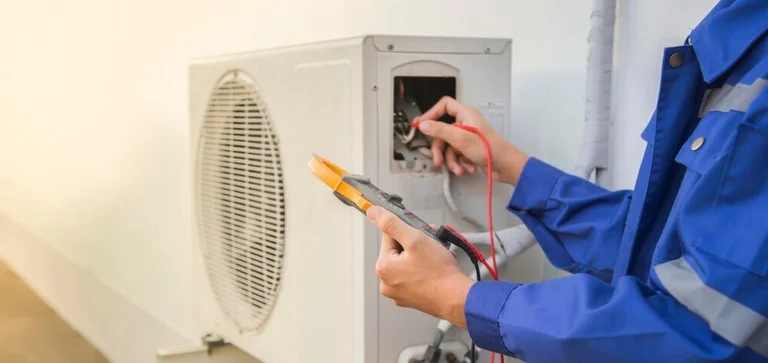It is nearly a given that most common HVAC problems with heating, ventilation, and air conditioning (HVAC) systems will arise. Problems, range from broken thermostats to blocked filters and leaking ducts, may negatively impact efficiency and comfort in both home and business environments. However, maintaining best possible HVAC performance requires an understanding of these common issues and their fixes. Homeowners and building managers can lessen issues and maintain continuous comfort and energy savings by routinely checking and cleaning filters, adjusting heating and cooling systems, and quickly fixing duct leaks.
Becomes increasingly important to make sure your air conditioning system is operating smoothly as summer heat builds. It’s important to stock up on filters and other necessary components by making a trip to the neighbourhood air conditioning spare parts store. Because it captures dust, pollen, and other pollutants, AC air filter in particular is essential to preserving quality of air within buildings. Replacing this part on regular basis improves effectiveness of your air conditioning system and encourages better air circulation in your house or place of business. Thus, to ensure that your AC system functions well all season long, check your air filter before the oppressive heat waves come and keep extra parts on hand.
Here are the 7 Most Common HVAC Problems and How to Solve Them
1. Dirty Filters
A filthy filter is one of the most frequent and easily repairable HVAC issues. Filters that are dirty will block airflow, making the heating system work harder to keep the temperature at the right level. This puts too much strain on the device, increasing the risk of overheating, premature wear, and issues with HVAC airflow. It’s really simple to replace the filter, and almost anyone can do it without assistance from a qualified expert. The most difficult task is ensuring that you have the correct kind, but this information should be in your furnace’s handbook.
2. Uneven Room Temperatures
Variations in temperature between rooms and even within a single room might be caused by HVAC zoning issues. The entire house should receive equal distribution of warm or cool air from your ducts, but this isn’t always the case. Regretfully, your ducting may need to be redesigned. It is often possible to modify ducts to provide consistent temperatures throughout the house.
3. Problems with Pilot Light and Ignition
Your furnace’s ignition system functions according to a highly defined procedure. It is possible that your furnace fails to start if one of the parts or ingredients is broken. Burners, flame sensors, or the pilot light itself may be the source of the problem. It’s an issue that has to be professionally diagnosed and fixed. Make an appointment with a qualified technician who can handle the high-voltage electrical supply and gas supply safely if your furnace won’t light.
4. Malfunctioning Thermostat
It could be the thermostat if you think the heating system isn’t working properly. These are advanced gadgets that have a wide range of functionality. Consult the owner’s handbook first. There can be a troubleshooting section to assist you in identifying and resolving the problem. (Hint: changing the battery might be all that’s needed!) Seek the assistance of a technician if that fails.
5. Tripped Breakers and Blown Fuses
A fuse may have burst, or a circuit breaker may have tripped if the system completely shuts off and doesn’t seem to have any power at all. The cause of these problems is an overworked burner. A filter that is blocked is frequently the cause of an overworked furnace. As a result, start by changing the filter. To solve the issue if it continues, contact a technician.
6. Dirty Condenser or Evaporator Coils
Your system might not be heating or cooling as well as it should if it has not received routine maintenance. An inefficient HVAC system is most likely caused by filthy condenser and evaporator coils. Once the electricity is turned off, an outdoor coil can be washed down. A specialist may be required to service condensers and coils that are extremely unclean.
7. Water Leaks from the Unit
Condensation from heaters and air conditioners is directed towards drainpipes. Water may back up and seep from the unit as a result of blockages in these pipes and the drains. Use bleach to clean the drains by pouring it down the pipes. Make quick touch with an expert if you are unable to resolve the problem on your own.
Conclusion
HVAC systems have most Common HVAC Problems, but many of them can be resolved with quick troubleshooting and preventive maintenance. People can avoid pain and unnecessary energy costs being careful about filter changes, thermostat calibration, and duct inspections. Getting expert help for complicated problems guarantees HVAC systems continue dependable and effective, extending lifespan and maximising comfort in home and business settings.



